Dot & Line Blog


CIE O’level Exam Prep English Language-1123 – Narrative Writing
- Kanwal Hafeez
- December 8, 2023

Table of Contents
Narrative writing.
Narrative writing involves crafting a compelling and engaging story. Students are tasked with developing characters, setting, and plot in a way that captivates the reader’s attention. Through vivid descriptions, well-paced sequences, and thoughtful use of dialogue, narrative writing aims to transport the audience into the fictional world created by the writer. The challenge lies in constructing a cohesive narrative structure, incorporating elements like exposition, rising action, climax, falling action, and resolution.
Successful narrative writing in the 1123 examination not only demonstrates a command of language and storytelling techniques but also showcases the ability to evoke emotions and sustain reader interest throughout the narrative journey.
1. Understanding Elements of Plot
In narrative writing, understanding the elements of plot is crucial. This includes introducing the exposition (setting, characters), establishing the conflict, developing rising action, reaching a climax, falling action, and ultimately, the resolution. Writers should craft a well-paced plot to maintain reader engagement. Click here for some useful resources.
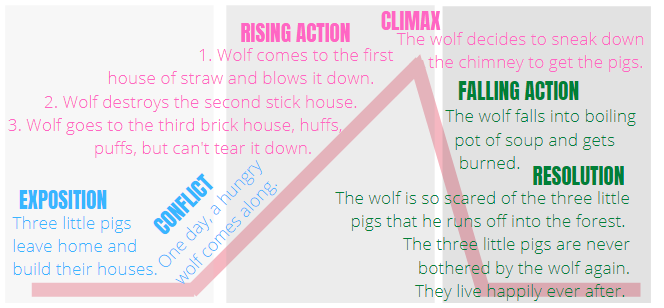
2. Developing Characters and Settings
Narrative writing in involves creating characters that are relatable and dynamic. Develop characters with distinct personalities, motivations, and conflicts. Settings should be vividly described, providing a backdrop that enhances the overall atmosphere of the story. Both characters and settings should contribute to the narrative’s themes and mood. For some useful graphic organizers and resources, click here .
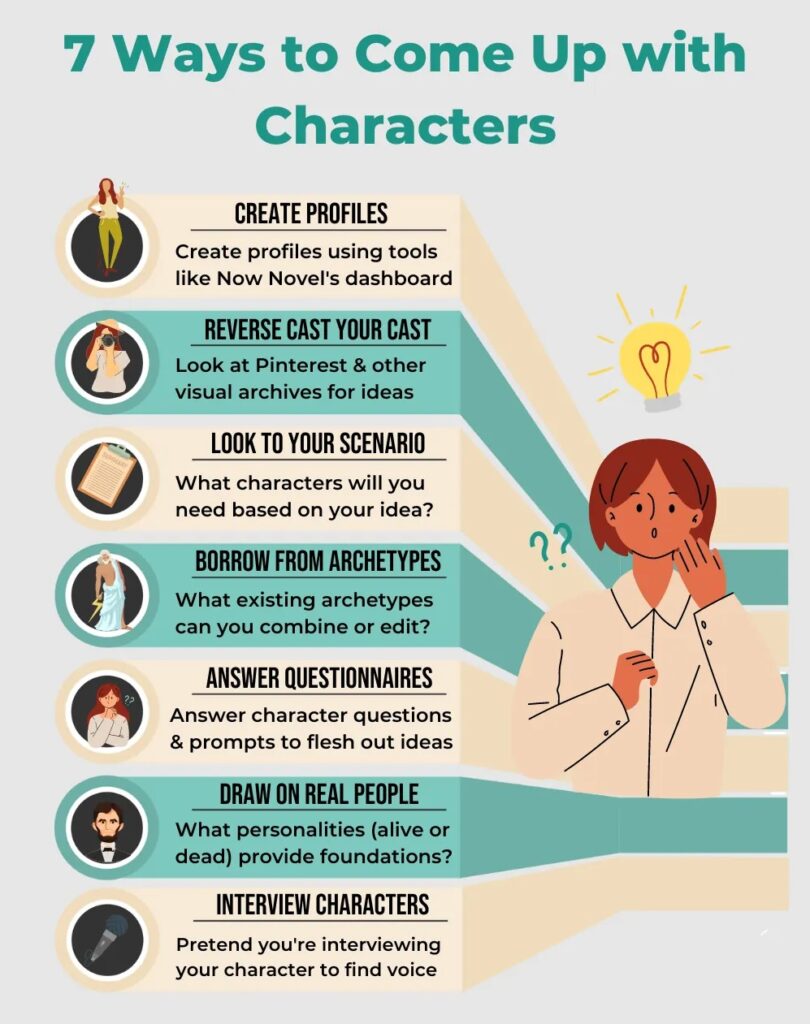
3. Structure
Structure is the framework that holds a narrative together. Narratives should have a clear beginning, middle, and end. Consider how events unfold, ensuring a logical sequence that builds tension and interest. A well-structured narrative helps readers navigate the story smoothly.
4. Creating Dialogues
Dialogues play a crucial role in narrative writing. They bring characters to life and advance the plot. Effective dialogue should be natural, revealing character traits, relationships, and moving the story forward. Use dialogue tags, varied sentence structures, and punctuation to make conversations engaging and authentic.
Context Embedded Grammar
Context-embedded grammar refers to the incorporation of grammatical principles within the broader context of language usage. It emphasizes understanding and applying grammar rules in real-world situations, such as those encountered in reading passages or writing prompts. Rather than treating grammar in isolation, context-embedded grammar acknowledges that effective language use involves considering the nuances of context, audience, and purpose.

In English Language 1123 examinations, this approach may require students to apply grammatical concepts—such as sentence structure, punctuation, and verb tense—within the specific communicative tasks presented, ensuring that grammatical accuracy aligns seamlessly with the broader language context in which it operates. This approach not only assesses the knowledge of grammar rules but also evaluates the ability to use them effectively within the given linguistic context.
Conclusion:
In conclusion, narrative writing in CIE English Language 1123 is an art that goes beyond storytelling. It demands a nuanced understanding of plot elements, character development, structure, and the use of dialogues. Successful narratives showcase not only language proficiency but also the ability to evoke emotions and sustain reader interest.
The incorporation of context-embedded grammar further emphasizes the practical application of grammatical principles in real-world language use.
Related Posts.

Chapter 8: Human Nutrition
Chapter 8 delves into human nutrition, beginning with the principal sources and dietary importance of essential nutrients. From carbohydrates and
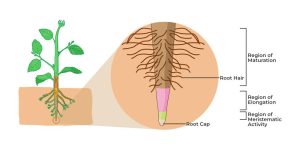
Chapter 7: Uptake and Transport of Water and Ions:
Chapter 7 explores the intricate process of water and ion uptake in flowering plants, starting with the specialized structure and
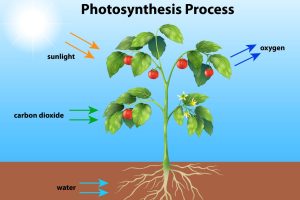
Chapter 6: Photosynthesis
Chapter 6 delves into the intricate process of photosynthesis, where plants harness light energy to synthesize carbohydrates. Chlorophyll, the green

Narrative Writing Sample | GCE O Level English (1123) | Best Notes
You want to get an A* in GCE O Level English but, your writing skills are not very good? Even if you are good at writing, you want to see some work of other students to learn something new?
Do not, worry. I am here to help. But before, let me introduce the topic to you.
Narrative writing is a form of writing in which there is a main character. This character faces a problem or an event and then deals with it.
In simple words, it tells you a story with a proper sequence of events (plot). For example, you share your amazing story about your exams. So basically, if you do this, you are using characteristics of a narrative.
Suspense if a main part of a narrative. But, we will take a look at it later in this article.
You should know that narrative is a part of section 2 in paper 1 of O level English. You have to write between 350 to 500 words for this question.
We'll take a look at:
Parts of Narrative Writing:
(If you are interested in only reading the sample, scroll down. But, it is not recommended).
Just like a cake has some layers, narrative has also some parts. But, why should you know them?

It is very simple. If you do not know about the parts of a narrative you, will not be able to write a good story. For example, you have to know about your characters, story (plot) and setting while writing a story.
So, some of these parts are:
- Plot : In creative writing, it is the sequence in which events happen.
The plot is all about the story and how your events progress. But, it is not only how events are taking place in you story.
What do I mean by that? Let me tell.
A good plot shows how the character gets into a conflict (discussed below). Simply, your character has to get into trouble and then, he has to work out a solution to deal with the problem.
This creates suspense and drama that is one of the most important parts of creative writing, especially narrative. This is because you have to remember that without suspense, no one will read your story.
To summarise, a good plot looks something like this:
- The main character faces a conflict (problem).
- Things go right (everything gets normal).
- Things go wrong (problem arise that creates suspense).
- Finally, wrap up how your character deals with the problem (gets successful or fails).
Moving on, let’s talk about characters now.
- Characters : For me, characters are the most important. But why? Let me tell.
Characters are what your readers remember . For example, there is a hero or a villain that you will remember after reading a story. Therefore, they play a very crucial part in your essay writing.
Simply, characters are those people in your writing that perform actions and speak dialogues. They play their part in the story to develop the plot.

Note : Character development is the key if you want to write a good narrative. You have to show your characters change during the story and what part they play.
There are different kinds of character. For example:
- Protagonist : The main character of the story (and the most important one).
- Antagonist : The villain of the story (the opponent of the protagonist).
- Tertiary characters : They are the minor characters in the story that may or may not be linked to the storyline.
However, the tertiary characters serve different functions and objectives. You can use these characters to your benefit by developing your sequence of events (plot).
- Conflict : This is the part of the story when your main character faces some problems. This part is what you can call suspense or drama.
Here, you have to make sure that tension builds that keeps your readers engaged. What do I mean by that?
Simply, let’s suppose that your character is being accused (blamed) for a crime that he has not committed . This is the conflict that your character will resolve. So, the conflict allows your story to continue.
Remember the better the conflict, the better the story.
- Setting : A backdrop (or setting) refers to the location or time in the narrative.
It can be fictional or non-fictional, depending on your story. Let me explain this with the help of an example.
For example, a story about a boy who is bullied in college in the suburb of Atlanta , in the 1980s .
Moving on, let me share a sample of creative (narrative) writing with you so that we can discuss some other points regarding this topic.
Sample of Narrative Writing:
Question : Write a story in which you disobeyed an order.
Sample response:
The camp had never been as crowded as it was on that day which dawned crisp and clear. I had never witnessed so much chaos that erupted due to the convocation of the arriving troops.
This was because our village was under attack by a rival party, and our soldiers were summoned to prevent further loss of lives. This was the only thing that we could do at the moment – abide by the orders given to us.
Ryan , our leader, was a tall dark man who possessed fierce looks. He assembled me and Jimmy in his office and, we rushed to meet him. Unlike other days, we had to clear multiple security checks because dozens of Seraphites penetrated our camps.
Seraphites were the people of our rival squad but, Ryan called them “Scars”. Therefore, everyone followed his expression due to the simultaneous feelings of fear and respect.
Ryan’s office was as usually dark, and it was like a place out of time. The smoke of the cigarette occupied the entire room with its offensive, eye-watering and stale odour.

“Joel and Jimmy, do not leave the camp at any cost . The scars have their traps all around”, he said. We nodded and enquired about our future plans.
However, the blaring sounds of disarray disturbed our conversation. “Go check out what the matter is. I am expecting Chris and Karl back to the camp soon”, Ryan said in an optimistic manner. I dashed out where I glanced at some soldiers dragging a body towards Ryan’s room.
I lifted the muddy black fabric from the face, and it was Karl. “Chris has killed him! We will make that traitor pay for this”, one of the sobbing soldiers commented. I was in utter disbelief because Chris and Karl had served our village for decades and therefore, I could not comprehend one being a traitor.
Further reading :
Account Writing Sample | O Level English (1123)
Report Writing Sample | Directed Writing
Formal Letter | Format and Sample
“I have to get to the bottom of the issue”, I said in a hustle. My ally Jimmy urged me to stop and not disobey Ryan’s order of not leaving the camp. I was determined to reach out to Chris, and I even knew about his whereabouts.
This was because he was entrusted an assignment to our previous hide-out. Nonetheless, Jimmy helped me egress from the camp from the Southern door because the number of troops was minimal over here.
I confidently marched towards the East to confront Chris, but after twenty minutes of hectic sprinting, I became more cautious. Unfortunately, one of the traps of Scars caught me as my left foot was trapped in a metalled cage (like structure).
I was surrounded by numerous Scars within a fraction of seconds who had their heads shaved and eyebrows removed, and they were honestly terrifying. They referred to us (the people of my camp) as “ Wolves ” and one of them said: “We need to get rid of him. He has an idea where we are camping”.
I took a deep breath and my nose caught the most horrible odour ever. The smell was terrible – it could even get a beast on its feet. But, I was more concerned about my life as it flashed before my eyes . The muscles in my body screamed at me to flee, but the cage kept me frozen.
My intensifying breaths came to a halt for a while when I started to hear distant gunshots. These disturbing sounds caught the attention of most of the Scars, who departed in fragments to come across the matter. This was the time when I grabbed out my knife, which I concealed, and struck the cage with intense force until the lock pierced into pieces.
With this, I instantly broke into a sprint and multiple Scars started to chase me. The colour of my pale face was draining , and my legs were losing their energy and potential to run. However, half a mile forward, Jimmy appeared who diverted their route.
Exhausted, I arrived at the door of the camp where Ryan was standing with his wide-open glaring eyes and tightly closed lips. I wanted to explain but he yelled in an uncontrollable manner: “ You disobeyed me for that traitor? I also want to know why he did that to his close friend, Karl.”
Simultaneously, he struck sharply at my face with intense force from his hands and ordered me to get locked. I was anxious about my punishment but even more worried about Chris. My mind was bombarded with questions such as, “Why did he commit this crime? What if he is innocent? What punishment will the camp decide for him, and for me?” I sobbed in the cell which gradually escalated.
Examiner response:
First of all, let’s start with the strengths of the response .
- The candidate makes use of description (particularly sensory words sometimes) which is very important in a narrative.
For example, “I took a deep breath and my nose caught the most horrible odour ever. The smell was terrible – it could even get a beast on its feet”.

The thing over here is that good vocabulary is important to score well. However, do not the stuff in fancy words you have learned just to make your story look good. This will do more harm than good .
Therefore, try to keep your writing style as natural as possible. The candidate deserves appreciation for this point (at least in my point of view).
Bonus tip : If you want to use good vocabulary and make it look natural, here is what you can do. Find out the words you want to use. Learn about their meaning and read sentences around those words. Then, gradually use them in your writing. They will look much more natural than usual.
- There is some element of suspense in the story. This keeps the reader engaged.
For me, suspense and mystery are extremely important in a narrative.
Simply because it keeps your reader engaged , and when you convince your reader to keep reading, you have written something good. Let me explain this with the help of an example.
The candidate uses a cliffhanger technique at the end of the narrative. For you, a cliffhanger is a technique that creates suspense (at the end of the story). What happens is that the writer leaves some questions (unanswered) for the readers.
For example, the candidate leaves it on the readers to think what the fate of the writer (Joel) and another character, Chris, would be. The questions such as “what if he is innocent?” create suspense among the readers.
But note that, do not leave your story incomplete (this technique does not say that). It is all about leaving behind some questions (which you do not answer) and demand your readers to figure them out. This takes us to another important point, which is about the characters.
- You will agree with me over here, a story without good characters is not a good story.
When it comes to characters, there are some areas of improvement (which I have discussed later). But for now, let’s talk about some positive points.
There is some description about the characters and their roles, such as: “Ryan, our leader, was a tall dark man who possessed fierce looks”. The story has major as well as minor characters.
Moreover, the dialogues used by the characters show that the candidate had knowledge about dialogues. But remember that, do not use dialogues in excess .
You have to use dialogues sometimes to show the examiner that you have knowledge about them. But, too much dialogue makes your narrative less of a story but some of a speech . So, use them when necessary (and when you should use them).
If you are not using dialogues, you are compromising on major elements of narrative writing , such as character development. Because your reader will know about your characters through their dialogues. So keep that in mind.
- The story revolves around the topic of disobeying an order.
The topic was about writing a story in which you disobeyed an order. Well, the story justifies the topic (although there could have been some improvements).
The story clearly has a theme and a plot. Furthermore, the candidate successfully builds up the story, making the main character forceful to “disobey the command” of their leader. In terms of language, the student uses decent vocabulary along with transition words (such as however and moreover).
The candidate uses simple sentences along with compound sentences. The spellings and grammatical mistakes are less but, this area can be improved further (because in the English language, these things matter).
Now, let’s talk about some areas of improvement as well.
The areas of improvement:
- I think you will agree with me over here. The story has not a “great” beginning (particularly, the first paragraph).

But why am I saying this? Let me explain this to you.
A good starting in a story indicates what is going to happen in future (simply, an overview was required ). For example, the candidate could have given an overview of how events were going to happen in future.
And after all, the purpose of the introductory paragraph is to briefly tell your readers what the story will be about. In short, the candidate could have linked the starting lines with the topic (of disobeying the order).
The take away from this is that make sure that your reader knows what the story is going to be about. For that, make sure you talk about the topic at the start (this may not be applicable to all narrative topics). In my opinion, the start could have some reference to all the soldiers abiding by the orders of their leader.
And like the beginning, the conclusion could have improved (by describing some challenges that the character faced after disobeying the order).
Moving on to the next thing, which is about the element of suspense and tension.
- Earlier, I said that there is some element of suspense present in the story. But it can be improved. Let me show you how this can be done.
There is suspense in the story when the main character gets caught by his rivals . But, a better description of the problems faced by the character could have been written. The tension could have been build with details about what his rivals were planning to do with him.
And if I talk about the setting here, the candidate could have explained a little bit more about the time and place. These things are the main components of a narrative. Therefore, you should “show not tell”.
- A predictable plot is a bad plot .
You may have predicted what was going to happen in the future. If this happens, then there is a problem with the plot.
Let me explain.
A plot should have interesting twists (in the story) that build up tension and mystery. This is the thing that will prevent your writing from being “boring”. When it comes to this sample, a couple of twists in the plot could have made the story very good.
For example, the attack on the camp when the main character returned or meeting with the so-called “traitor” (or something like that may work). So, try to do these things to keep your readers engaged.
- The candidate should have worked on the characters as well.
Look, no one likes flat characters . The student has used characters – great. But, there are some things to improve over here.
You have to make your character interesting (for example your character may love to do strange or risky things). If your characters (especially the protagonist) are unique, readers will love your story.
For example, a casual story about a dad working hard for his family may not necessarily be interesting. But, a story about a dad working hard and educating his daughter despite social pressure may work out as a good story (depends on how you deliver it).
Conclusion:
With this, our topic about narrative writing has come to an end. Thank you very much for reading and staying with me till the end.
In this article, I have discussed the parts of a narrative along with a sample report. Do practise some questions and take proper feedback from someone so that you improve your writing skills.
Now I turn it over to you. Which part of a narrative you think matters the most? Is it the conflict, setting or the plot? I will appreciate your thoughts on the topic.
Stay tuned for more.
Leave a Reply Cancel reply
Your email address will not be published. Required fields are marked *
Save my name, email, and website in this browser for the next time I comment.
FirstLanguageEnglish.com
Your key to IGCSE First Language English!
- Your Profile
- Membership Signup
- Publications
- Descriptive and Narrative Essay Bank
- Directed Writing Sample Responses – EnglishFirstLanguage.net
- Writer’s Effect – Sample Answers
- Summary – Sample Responses for Question 1(f)
- Mission and Motivation
- Live Tuition Class Interest Form
Search Here ….
Unleashing your creativity: story structures for top-scoring igcse narrative writing.

As IGCSE students, you’re on a quest to master the art of narrative writing, and I’m here to be your trusted guide.
Today, we’ll explore the fascinating world of story structures that will help you craft captivating, engaging, and top-scoring narrative pieces. So, buckle up and get ready to unleash your creativity and embark on a journey to the land of A+ narratives!
We’ll start first with our recommendations for narrative structures that you can try out in your writing (more specific and targeted blog posts, examples, and templates will follow in the coming weeks), and also provide examples that take place in some books that you can consider reading; they are mostly classics.
While they won’t demonstrate the entirety of each one of these narrative structures in full, they will provide some valuable insight into what to look for and also provide examples that you can reference if you have the interest (and the time!) to pursue some reading. 🙂
In the final section, we will justify these recommendations with specific reference to the mark scheme.
Do know also that it is possible to combine this narrative structures with one another and that you most likely will do so as you utilise the techniques that you learn in this post in order to deal with the unseen prompts that you will encounter on the exam and write stories at large 🙂
Sounds good? Let’s go! 🚀
Narrative Structures
- The Classic Three-Act Structure: Tried and True
The three-act structure is like a reliable old friend, always there to guide you through the world of storytelling. This classic approach divides your narrative into three parts: the setup, confrontation, and resolution. By establishing a strong beginning, middle, and end, you’ll create a well-balanced and engaging story that is sure to impress your IGCSE examiners.
“Once upon a time in a faraway land, there lived a young girl named Cinderella who was forced to work as a servant for her wicked stepmother and stepsisters.” – Cinderella, Charles Perrault.
This opening line from the classic fairytale of Cinderella sets the stage for a story that follows the three-act structure. The first act introduces the characters and the central conflict, the second act chronicles Cinderella’s struggles and her magical night at the ball, and the third act brings about resolution and a happy ending as she marries the prince.
Note however that the Three-Act Structure does not necessarily entail a happy ending – it is just a framework for setting up your story, and definitely can and should be used in conjunction with some of the other narrative structures as well as intelligent discernment in order for you to construct a piece that will impress and wow your examiners! Thank you to Ms. Rani CK for discussing this with me 🙂
- The Hero’s Journey: Embrace the Adventure
The Hero’s Journey, inspired by Joseph Campbell’s monomyth, is a story structure that revolves around a protagonist’s transformative adventure. Your hero (or heroine) will face trials, overcome obstacles, and ultimately return as a changed person. By incorporating this powerful structure into your narrative writing, you’ll create a compelling and dynamic story that captures the essence of human experience and captivates your readers (and examiners).
“In a hole in the ground there lived a hobbit.” – The Hobbit, J.R.R. Tolkien.
J.R.R. Tolkien’s opening line in The Hobbit introduces the protagonist, Bilbo Baggins, and marks the beginning of his Hero’s Journey. Throughout the story, Bilbo leaves his comfortable home, faces various trials and adventures alongside a group of dwarves, and ultimately returns transformed, having discovered his inner courage and resourcefulness.
- In Medias Res: Start with a Bang
Dive headfirst into the action by employing the “in medias res” (Latin for “in the midst of things”) story structure. This technique drops your reader right into the heart of the action, creating an immediate sense of intrigue and excitement. By starting with a gripping event, you’ll pique your reader’s curiosity and encourage them to keep reading as you gradually reveal the backstory and context. This bold approach will show your IGCSE examiners that you’re a fearless and innovative storyteller.
“Someone must have slandered Josef K., for one morning, without having done anything truly wrong, he was arrested.” – The Trial, Franz Kafka.
Franz Kafka’s The Trial starts in medias res, as the protagonist Josef K. is arrested without any prior explanation. This opening plunges the reader right into the action and establishes a sense of immediacy and confusion, setting the stage for a narrative that will gradually reveal the circumstances and consequences of this arrest.
- Nonlinear Narrative: Play with Time
Who says stories need to follow a chronological order? By experimenting with a nonlinear narrative, you’ll weave a tale that jumps between different time periods, creating an intricate and thought-provoking story. This structure requires skillful planning to ensure your reader can follow the story’s progression, but when executed well, it can lead to a captivating and memorable piece that will undoubtedly impress your IGCSE examiners.
“All this happened, more or less.” – Slaughterhouse Five, Kurt Vonnegut Jr.
Kurt Vonnegut’s Slaughterhouse-Five is a prime example of a nonlinear narrative. The novel tells the story of Billy Pilgrim, who becomes “unstuck in time” and experiences events from his life in a disjointed order. This opening line acknowledges the narrative’s unconventional structure, as the story will jump back and forth in time to explore Billy’s life, war experiences, and encounters with extraterrestrial beings.
- Frame Narrative: Stories within Stories
Unleash the full power of your storytelling abilities with a frame narrative. This structure involves a story within a story, where an outer narrative “frames” an inner one. By employing this sophisticated technique, you’ll create depth and layers to your writing, offering your reader multiple perspectives and a rich, immersive experience.
“You will rejoice to hear that no disaster has accompanied the commencement of an enterprise which you have regarded with such evil forebodings.” – Frankenstein, Mary Shelley.
Mary Shelley’s Frankenstein is a frame narrative, as it begins with a series of letters from Captain Walton to his sister, chronicling his Arctic expedition. The story of Victor Frankenstein and his monstrous creation is relayed to Walton, who then recounts the tale to his sister through the letters. This structure adds layers of depth and multiple perspectives to the narrative, enriching the overall storytelling experience.
Why do these work?
In this section, we’ll delve into how each of the story structures we’ve discussed can help students achieve top marks in their IGCSE narrative writing, specifically addressing the marking criteria for content, structure, and style.
- The Classic Three-Act Structure
Content and Structure (W1 & W2): The three-act structure’s clear beginning, middle, and end ensures that your narrative is well-balanced and organized. By establishing a strong setup, confrontation, and resolution, you can create complex, engaging, and effective content, satisfying the requirements for the highest marks.
Style and Accuracy (W3 & W4): A well-executed three-act structure also allows for precise vocabulary and varied sentence structures, as well as a consistent, well-chosen register that aligns with the context of the story. These elements contribute to a high-scoring narrative in terms of style and accuracy.
- The Hero’s Journey
Content and Structure (W1 & W2): The Hero’s Journey offers a strongly developed plot that features character development, trials, and a satisfying climax. This story structure enables you to create engaging, complex, and effective content that demonstrates a deliberate and well-managed narrative flow.
Style and Accuracy (W3 & W4): The adventurous nature of the Hero’s Journey allows for the use of precise, well-chosen vocabulary and varied sentence structures. The story’s context also lends itself to an appropriate and consistent register, further contributing to a high-scoring narrative.
- In Medias Res
Content and Structure (W1 & W2): By starting your narrative in the midst of action, you immediately create engaging, complex, and effective content. The suspenseful nature of this structure requires careful management, which, when done successfully, demonstrates a secure and well-balanced narrative flow.
Style and Accuracy (W3 & W4): In medias res encourages you to use precise vocabulary and varied sentence structures to convey the excitement and tension of the story. The structure also allows for a consistent, well-chosen register that aligns with the high-stakes context, ultimately contributing to a top-scoring narrative.
- Nonlinear Narrative
Content and Structure (W1 & W2): A nonlinear narrative enables you to create complex, engaging, and effective content by challenging traditional storytelling conventions. Skillful planning is required to maintain a well-balanced and carefully managed narrative flow, which, when executed well, will satisfy the highest marks’ requirements.
Style and Accuracy (W3 & W4): The intricate nature of a nonlinear narrative demands precise vocabulary and a range of sentence structures to convey the story’s progression effectively. By demonstrating a consistent, well-chosen register suitable for the context, you’ll create a high-scoring narrative in terms of style and accuracy.
- Frame Narrative
Content and Structure (W1 & W2): A frame narrative provides depth and layers to your writing, allowing you to create complex, engaging, and effective content. This sophisticated structure requires careful management to ensure a secure, well-balanced, and deliberate narrative flow, satisfying the top marks’ requirements.
Style and Accuracy (W3 & W4): The multiple perspectives offered by a frame narrative enable the use of precise, well-chosen vocabulary and varied sentence structures. A consistent and appropriate register that aligns with the story’s context further contributes to a top-scoring narrative in terms of style and accuracy.
By carefully applying these story structures to your narrative writing, you can address the mark scheme’s criteria for content, structure, and style, putting you on the path to achieving the highest possible grades in your IGCSE narrative writing exam.
Conclusion: Your Path to Narrative Greatness
Remember, aspiring storytellers, the key to crafting an outstanding narrative piece lies in your choice of story structure and your ability to execute it masterfully. By exploring these various structures and aligning them with the highest IGCSE grade requirements, you’ll be well on your way to creating captivating, engaging, and top-scoring narratives.
So, go forth and weave your tales, for the world of narrative writing awaits! May your pen be mighty, your imagination boundless, and your stories unforgettable. With dedication, creativity, and a little guidance from these story structures, you’ll soon be the author of narratives that will not only impress your IGCSE examiners but also leave a lasting impact on all who read them.
victortanws
Leave a comment cancel reply.
You must be logged in to post a comment.
Recommended Posts

Welcome to FirstLanguageEnglish.com!
Welcome to the ultimate guide to conquering the 0500 First Language English exam! Whether you’re a student or a teacher, we are confident that you’ll find some value here. The materials on this site will break down the IGCSE First Language English curriculum for you, offer you some helpful tips, […]

It’s never too late.
The scene is familiar. You wake up one morning and the page of the calendar turns. Yet again. Imperceptibly, you’ve crept one day closer towards that test, that exam. Maybe time passed and you didn’t realize it. Maybe it wasn’t all that important to you. Maybe the only reason that […]
Narrative Essay Composition Bank Updated! (26th March, 2024)
Dear all, The Narrative essay compilation has been updated! Want to gain the exact examples you need for that A*? Sign up for a Premium membership so that you don’t miss out, today! V. We hope you enjoyed these essays! If you want to join our IGCSE First Language English […]

There Are No Miracle People: The Myth of Being “Naturally Good at English”
In a recent class, I talked to some of my students about Greek myths – specifically the myth of Daedalus and Icarus, and I think myths are really cool, the students really liked it, and I think I’ll probably do it again. And so today, what I want to talk […]
Descriptive Essay Composition Bank Updated! (19th March, 2024)
Dear all, The Descriptive essay compilation has been updated! Want to gain the exact examples you need for that A*? Sign up for a Premium membership so that you don’t miss out, today! V. We hope you enjoyed these essays! If you want to join our IGCSE First Language English […]
40 Excellent Descriptive and Narrative Essays (My apologies!)
Hello all! Some of you wrote over asking why it was that you couldn’t purchase the 40 Excellent Descriptive and Narrative Compositions book from the site – it was because the page didn’t include the file initially. So sorry about this! You should be able to purchase it now with […]

Narrative Essay Composition Bank Updated! (12th March, 2024)
Dear all, The Narrative essay compilation has been updated! If you’d like to access the essays and you have a premium membership, click below and enjoy! Want to gain the exact examples you need for that A*? Sign up for a Premium membership so that you don’t miss out, today! […]
Insert/edit link
Enter the destination URL
Or link to existing content
O Level English Language Updated - Everything You Need to Know
by Linta Rasheed
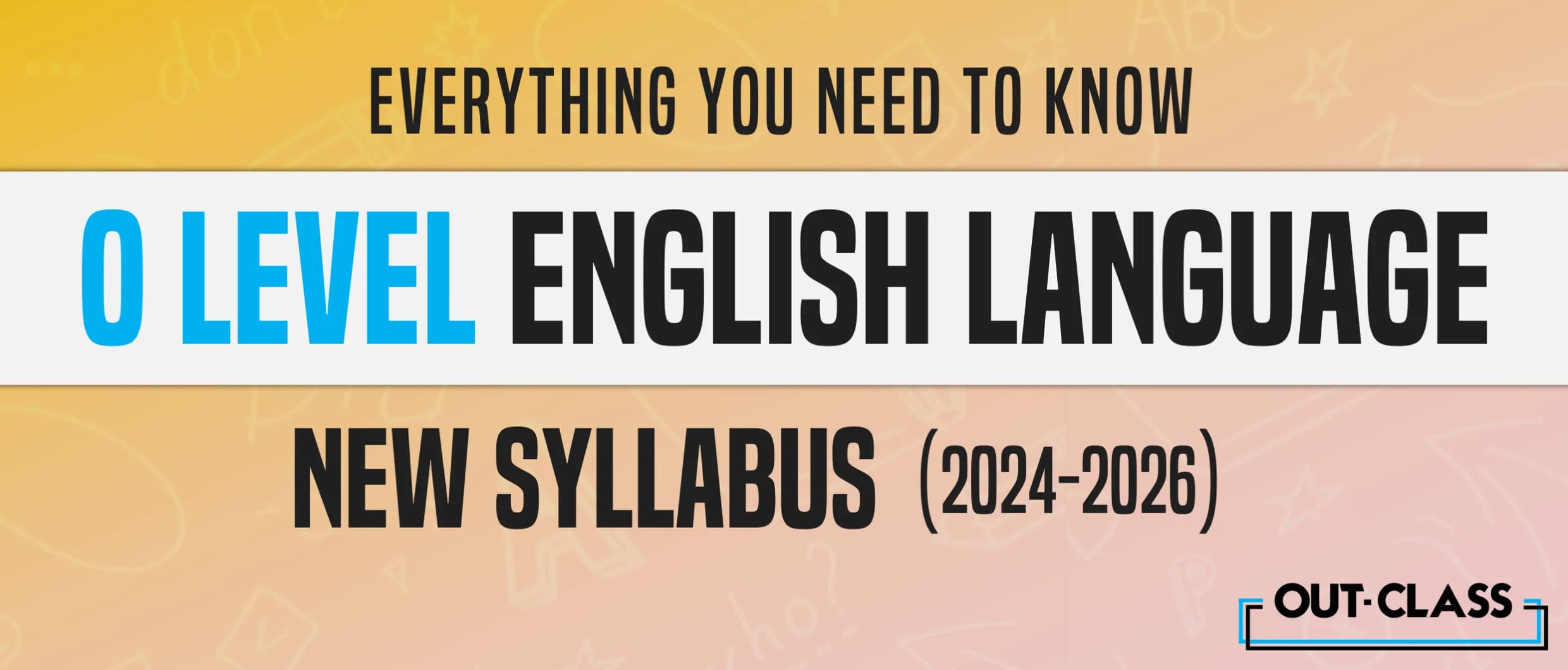
Greetings, diligent O Level English Language (1123) students ! Whether you're in Pakistan or beyond, you're undoubtedly aware of the significance of staying well-informed about the latest syllabus changes , particularly the one that takes effect from 2024 to 2026.
This comprehensive guide will delve into every nook and cranny of the English Language O Levels 1123 new syllabus , equipping you with the knowledge and insights needed to conquer this academic frontier .

Vision & Structure of the English Language O Levels 1123 new syllabus
Vision behind the change: .
This change brings a dynamic approach to language learning and assessment in the O Level English paper. This syllabus aims to provide a more engaging and contemporary learning experience, highlighted by additional command words and revitalized academic objectives.
Assessment Structure for O Levels English Syllabus 2024:
The O Levels English updated syllabus sticks to its two-paper format - Paper 1 and Paper 2. However, with the new O Level English updated syllabus in play, some changes in mark distribution and question types align perfectly.

English Language O Levels Paper Pattern
O levels english paper 1 (reading): the 80/20 challenge .
In O Levels English Paper 1, we dive into a two-hour journey dedicated to the art of Reading. This paper is divided into two sections , with a major focus on Reading (80%) and a sprinkle of Writing (20%) .
Section A: Comprehension and Use of Language (25 Marks):
In this section, you'll encounter a 900-word narrative text , Text A, plucked from 21st-century literature to give an updated touch to O Levels English Paper 1.
Question 1: Comprehension (16 Marks)
In these Cambridge O Level English Paper 1 comprehension questions, you'll tackle short-answer questions that test your grasp of the text's explicit and implicit meanings.
Question 2: Use of Language (9 Marks)
You'll analyze the author's language choices ( reading between the lines ) and their impact on the text's overall effect. You'll uncover the writer's craft of influencing readers through short-answer questions.
Section B: Summary and Short Response (25 marks)
For this section's questions, you’ll refer to the shorter Text B, hovering around 600 words.
Question 3a: Summary (20 marks)
In the English Language O Levels 1123 new syllabus , you must write a 150-word summary demonstrating your ability to filter information , organize ideas, use context-appropriate vocabulary , and understand explicit meanings - honing in on reading and writing assessment objectives.
Question 3b: Short Response (5 marks)
Through short responses, you, as an O Level student , will display your understanding of implicit meanings and attitudes.

O Levels English Paper 2 (Writing): The Art of Expression
In O Levels English Paper 2 , you'll spend two hours showcasing your writing prowess. This paper strongly emphasizes your writing skills, with an impressive 80% weightage given to the Writing component. In comparison, Reading takes up the remaining 20% .
Section A: Directed Writing (25 Marks)
This section presents you with one to two 400-word texts to evaluate. Your task? Craft an argumentative speech , email, report, letter, or article within a word limit of 250-300 words . It's a creative buffet of options ! A heads-up: master the speech writing format O Level and report writing format English O Level while reviewing O Level English past papers .
15 Marks for Writing Assessment Objectives
You'll earn 15 marks here by nailing the speech or report writing format English O Level, demonstrating articulation skills, showcasing vocabulary breadth, maintaining an appropriate register, and ensuring grammatical accuracy.
10 Marks for Reading Assessment Objectives
The remaining 10 marks test your analytical abilities. Can you extract key ideas (such as understanding the theme ), find textual support, and target useful information? This is where your critical thinking skills shine.
Section B: Composition (25 Marks)
In this section, you'll choose one question from two descriptive and two narrative prompts. Whether you're a vivid scene painter or a storyteller, there's a canvas for your imagination. However, remember that brevity is the soul of wit, so keep your composition within the 350-450 word range.
The English Language O Levels 1123 new syllabus sets clear expectations for your writing prowess. It would help if you showcased vivid expression, masterful structuring, a rich vocabulary, and grammatical expertise. A heads-up: master composition writing by practicing on O Level English past papers .
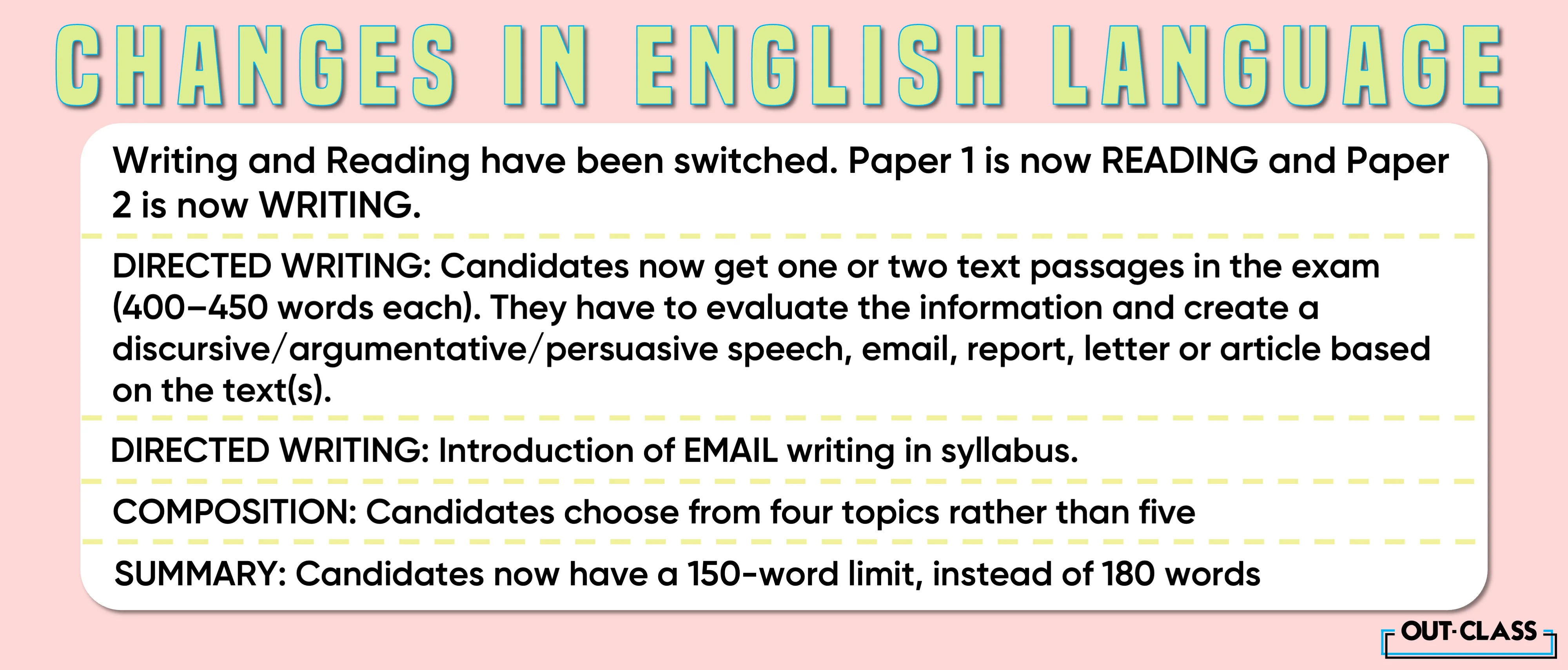
In conclusion, tackling the O Levels English syllabus 2024 might appear intimidating initially. However, by engaging in English Language O Level past papers practice , refining your speech and report writing format for English O Level , and embracing the focus on literary analysis, you're off to a promising start on your academic journey.
And remember, there's no need to feel overwhelmed. Out-Class offers a comprehensive solution to help you excel in the O Levels English new syllabus. With a meticulously crafted and compact course led by a leading tutor, you'll find yourself on a guided path to academic success.
So, embrace the challenge, and let your academic journey begin!
For more detailed changes, click here: https://www.cambridgeinternational.org/news/whats-new/cambridge-o-level/english/

If you want to dive right in, let's start with selecting the course you want
What course are you interested in, choose from the list.
Resources for CIE English Examinations
- Discussion Forum
- GCE AS Level General Paper 8004
- Resources for Teachers
O’level English 1123 – 2012 Past Papers

Here you can download June 2012 Past Papers, Marking Schemes and Examiner Report.
June 2012 Writing Paper A
June 2012 Writing Paper A – Marking Scheme
June 2012 Writing Paper B
June 2012 Writing Paper B – Marking Scheme
June 2012 Reading Paper A
June 2012 Reading Paper A – Insert
June 2012 Reading Paper A – Marking Scheme
June 2012 Reading Paper B
June 2012 Reading Paper B – Insert
June 2012 Reading Paper B – Marking Scheme
June 2012 – Examiner Report
——————————————————————————————————————————————-
Here you can download November 2012 Past Papers, Marking Schemes and Examiner Report.
November 2012 Writing Paper A
November 2012 Writing Paper A – Marking Scheme
November 2012 Writing Paper B
November 2012 Writing Paper B – Marking Scheme
November 2012 Reading Paper A
November 2012 Reading Paper A – Insert
November 2012 Reading Paper A – Marking Scheme
November 2012 Reading Paper B
November 2012 Reading Paper B – Insert
November 2012 Reading Paper B – Marking Scheme
November 2012 – Examiner Report
O’level English 1123 – 2011 Past Papers
Here you can download June 2011 Past Papers, Marking Schemes and Examiner Report.
June 2011 Writing Paper A
June 2011 Writing Paper A – Marking Scheme
June 2011 Writing Paper B
June 2011 Writing Paper B – Marking Scheme
June 2011 Reading Paper A
June 2011 Reading Paper A – Insert
June 2011 Reading Paper A – Marking Scheme
June 2010 Reading Paper B
June 2010 Reading Paper B – Insert
June 2010 Reading Paper B – Marking Scheme
Here you can download November 2011 Past Papers, Marking Schemes and Examiner Report.
November 2011 Writing Paper A
November 2011 Writing Paper A – Mark Scheme
November 2011 Reading Paper A
November 2011 Reading Paper A – Insert
November 2011 Reading Paper A – Mark Scheme
November 2011 Writing Paper B
November 2011 Writing Paper B – Mark Scheme
November 2011 Reading Paper B
November 2011 Reading Paper B – Insert
November 2011 Reading Paper B – Mark Scheme
November 2011 Examiner Report
O’level English 1123 – Specimen Papers for 2011 Exam
From June 2011, Cambridge University will conduct O’ level English Examination according to the new paper pattern, announced 02 years ago.
Major changes have been made to the Reading Paper, as there will be separate passages for Reading Comprehension and Summary Writing from June 2011 onwards. Summary Writing Task has also gone under a drastic change. The changes in the Writing Paper are minor ones, such as the word limit for Composition Writing Task has been reduced from 350-600 to 350-500 and now Composition Writing and Directed Writing tasks are of equal marks, i.e. 30 each.
Below you can find Specimen Papers and their Mark Schemes for June 2011 Examination issued by Cambridge University.
Specimen Writing Paper 1
Specimen Writing Paper 1 Marking Scheme
Specimen Reading Paper 1
Specimen Reading Paper 1 Insert
Specimen Reading Paper 1 Marking Scheme
————————————————————————————————————————
Specimen Writing Paper 2
Specimen Writing Paper 2 Marking Scheme
Specimen Reading Paper 2
Specimen Reading Paper 2 Insert
Specimen Reading Paper 2 Marking Scheme
O’level English 1123 – 2010 Past Papers
Here you can download June 2010 Past Papers, Marking Schemes and Examiner Report.
June 2010 Writing Paper A
June 2010 Writing Paper A Marking Scheme
June 2010 Reading Paper A
June 2010 Reading Paper A – Insert
June 2010 Reading Paper A Marking Scheme
June 2010 Writing Paper B
June 2010 Writing Paper B Marking Scheme
June 2010 Reading Paper B Marking Scheme
June 2010 Examiner Report
Here you can download November 2010 Past Papers, Marking Schemes and Examiner Report.
November 2010 Writing Paper A
November 2010 Writing Paper A Marking Scheme
November 2010 Reading Paper A
November 2010 Reading Paper Insert A
November 2010 Reading Paper A Marking Scheme
November 2010 Writing Paper B
November 2010 Writing Paper B Marking Scheme
November 2010 Reading Paper B
November 2010 Reading Paper Insert B
November 2010 Reading Paper B Marking Scheme
O’level English 1123 – 2009 Past Papers

Here you can download June 2009 Past Papers, Marking Schemes and Examiner Report.
June 2009 Writing Paper
June 2009 Writing Paper Marking Scheme
June 2009 Reading Paper
June 2009 Reading Paper Insert
June 2009 Reading Paper Marking Scheme
June 2009 Examiner Report
Here you can download November 2009 Past Papers, Marking Schemes and Examiner Report.
November 2009 Writing Paper
November 2009 Writing Paper Marking Scheme
November 2009 Reading Paper
November 2009 Reading Paper Insert
November 2009 Reading Paper Marking Scheme
November 2009 Examiner Report
O’level English 1123 – 2008 Past Papers

Here you can download June 2008 Past Papers, Marking Schemes and Examiner Report.
June 2008 Writing Paper
June 2008 Writing Paper Marking Scheme
June 2008 Reading Paper
June 2008 Reading Paper Insert
June 2008 Reading Paper Marking Scheme
June 2008 Examiner Report
Here you can download November 2008 Past Papers, Marking Schemes and Examiner Report.
November 2008 Writing Paper
November 2008 Writing Paper Marking Scheme
November 2008 Reading Paper
November 2008 Reading Paper Insert
November 2008 Reading Paper Marking Scheme
November 2008 Examiner Report
O’level English 1123 – 2007 Past Papers
Here you can download June 2007 Past Papers, Marking Schemes and Examiner Report.
June 2007 Writing Paper
June 2007 Writing Paper Marking Scheme
June 2007 Reading Paper
June 2007 Reading Paper Insert
June 2007 Reading Paper Marking Scheme
June 2007 Examiner Report
Here you can download November 2007 Past Papers, Marking Schemes and Examiner Report.
November 2007 Writing Paper
November 2007 Writing Paper Marking Scheme
November 2007 Reading Paper
November 2007 Reading Paper Insert
November 2007 Reading Paper Marking Scheme
November 2007 Examiner Report
O’level English 1123 – 2006 Past Papers

Here you can download June 2006 Past Papers, Marking Schemes and Examiner Report.
June 2006 Writing Paper
June 2006 Writing Paper Marking Scheme
June 2006 Reading Paper
June 2006 Reading Paper Insert
June 2006 Reading Paper Marking Scheme
June 2006 Examiner Report
Here you can download November 2006 Past Papers, Marking Schemes and Examiner Report.
November 2006 Writing Paper
November 2006 Writing Paper Marking Scheme
November 2006 Reading Paper
November 2006 Reading Paper Insert
November 2006 Reading Paper Marking Scheme
November 2006 Examiner Report
O’level English 1123 – 2005 Past Papers

Here you can download June 2005 Past Papers, Marking Schemes and Examiner Report.
June 2005 Writing Paper
June 2005 Writing Paper Marking Scheme
June 2005 Reading Paper
June 2005 Reading Paper Marking Scheme
June 2005 Examiner Report
Here you can download November 2005 Past Papers, Marking Schemes and Examiner Report.
November 2005 Writing Paper
November 2005 Writing Paper Marking Scheme
November 2005 Reading Paper
November 2005 Reading Paper Insert
November 2005 Reading Paper Marking Scheme
November 2005 Examiner Report
O’level English 1123 – 2004 Past Papers

Here you can download June 2004 Past Papers, Marking Schemes and Examiner Report.
June 2004 Writing Paper
June 2004 Reading Paper
June 2004 Reading Paper Insert
June 2004 Marking Scheme
June 2004 Examiner Report
Here you can download November 2004 Past Papers, Marking Schemes and Examiner Report.
November 2004 Writing Paper
November 2004 Writing Paper Marking Scheme
November 2004 Reading Paper
November 2004 Reading Paper Insert
November 2004 Reading Paper Marking Scheme
November 2004 Examiner Report
You are currently browsing the archives for the O’level English Language 1123 Past Papers category.
- AS Level GP 8004 Past Papers
- IGCSE First Language English 0500 Past Papers
- O'level English Language 1123 Past Papers
- O'level Literature in English 2010 Past Papers
Email Subscription
Enter your email address to subscribe to this blog and receive notifications of new posts by email.
Email Address:
Sign me up!
- 3,388,730 hits
Recent Posts
- O’level English Language – 2017 Papers
- O’level English Language – 2016 Papers
- GCE AS Level 8004 – Exam Resources
- Formats for O’level English Directed Writing Tasks
- O’level English 1123 – Standards Booklet
Recent Comments
Create a free website or blog at WordPress.com.
- Already have a WordPress.com account? Log in now.
- Subscribe Subscribed
- Report this content
- View site in Reader
- Manage subscriptions
- Collapse this bar

IMAGES
VIDEO
COMMENTS
In conclusion, narrative writing in CIE English Language 1123 is an art that goes beyond storytelling. It demands a nuanced understanding of plot elements, character development, structure, and the use of dialogues. Successful narratives showcase not only language proficiency but also the ability to evoke emotions and sustain reader interest.
So basically, if you do this, you are using characteristics of a narrative. Suspense if a main part of a narrative. But, we will take a look at it later in this article. You should know that narrative is a part of section 2 in paper 1 of O level English. You have to write between 350 to 500 words for this question.
Paper 1 Writing 1 hour 30 minutes Candidates answer two questions: the compulsory question in Section 1 and one question from Section 2. Section 1: Directed Writing (30 marks) Candidates are presented with one compulsory writing task. Candidates write a response of 200-300 words. Section 2: Composition (30 marks)
In this video, I have discussed some amazing tips to write a narrative. From using literary devices to a sample narrative essay, you will find everything in ...
Specimen papers. The Cambridge O Level English Language syllabus enables learners to communicate accurately, appropriately and effectively and to understand and respond appropriately and imaginatively to what they read and experience.
Paper 1 - Writing Cambridge O Level English Language 1123 17 Section 2: Creative Writing In this section there are fi ve topics to choose from, each of which comes under one of three essay types: narrative (3 and 5), discursive (2) and descriptive (1) 4 can be interpreted in any way candidates choose.
O Level English Language 1123 can give a tough time to many students. In this second video of the series,. Sir Hunain Zia (154 Total A Grades, 7 Distinctions...
1 A very popular teacher at your school is leaving after a long and successful career. The staff, students and parents are going to celebrate the teacher's career at a ceremony where the Principal will make a thank-you speech. The Principal asks you to write a report which gives information for the thank-you speech.
This video is extremely important for O Level students who are appearing in English Language (1123) subject. The video covers Paper 1, Directed Writing porti...
Paper 1123/11 . Writing . Key messages • Candidates should ensure they identify the key words in each task so as to satisfy the requirements of the question. ... • Direct speech helps to improve a narrative but it needs to be accurately punctuated and paragraphed.
Grammar - Video Lectures. The Cambridge O Level English Language syllabus enables learners to communicate accurately, appropriately and effectively and to understand and respond appropriately and imaginatively to what they read and experience. They will employ different forms of writing to suit a range of purposes and will show that they can ...
1123/11 October/November 2021 1 hour 30 minutes ENGLISH LANGUAGE Paper 1 Writing You must answer on the enclosed answer booklet. ... Write on one of the following topics. At the beginning of your composition put the number of the question you have chosen. You are advised to write between 350 and 500 words.
Paper 1123/11 Writing ... Fulfilment it is the development of the ideas that will gain most marks. The first bullet point posed few ... occasionally led to a more narrative approach. However, there were some highly sensitive descriptions of how different people react at the end of school, often focusing on different groups of candidates, or ...
ENGLISH LANGUAGE 1123 PAST PAPERS English Language O Level Past Papers and Important Details. 12/01/2023 : English Language 1123 October November 2022 Past Papers of O Levels are Updated. Moreover English Language 1123 Past Papers of May June 2022 are also available. CAIE was previously known as CIE. Within this Past Papers section you will also get Topical Past Papers now as well as Solved ...
This narrative writing secured an A* in GCE O Level English (1123).Along with the sample narrative, you will also find what makes this narrative effective. P...
As IGCSE students, you're on a quest to master the art of narrative writing, and I'm here to be your trusted guide. Today, we'll explore the fascinating world of story structures that will help you craft captivating, engaging, and top-scoring narrative pieces. So, buckle up and get ready to unleash your creativity and embark on
Similarly, in Writing, learners should develop a range of skills, including the ability to create and compose texts with a variety of forms and purposes, for example, descriptive, narrative, argumentative and persuasive. Encouraging learners to practise reading and writing different text types such as: emails, letters,
Paper 1123/11 Writing Key messages ... • Consider all the titles in Section 2 before deciding which topic to write on. • Direct speech is useful in developing characters and plot, but must be punctuated properly with correct ... There was a good range of responses in Section 2, although the narrative questions were generally more
1123/11 May/June 2020 1 hour 30 minutes ENGLISH LANGUAGE Paper 1 Writing You must answer on the enclosed answer booklet. You will need: Answer booklet (enclosed) INSTRUCTIONS • Answer two questions in total: Section 1: answer Question 1. Section 2: answer one question. • Follow the instructions on the front cover of the answer booklet. If ...
In the English Language O Levels 1123 new syllabus, you must write a 150-word summary demonstrating your ability to filter information, organize ideas, use context-appropriate vocabulary, and understand explicit meanings - honing in on reading and writing assessment objectives. Question 3b: Short Response (5 marks)
O Levels English (1123) 2022, O Levels English (1123) 2022 Past Papers, O Levels English (1123) 2022 Question Papers, O Levels English (1123) 2022 Marking Schemes, O Levels English (1123) 2022 Grade Thresholds . Resource Guide for File Naming System. Click the image to view.
The changes in the Writing Paper are minor ones, such as the word limit for Composition Writing Task has been reduced from 350-600 to 350-500 and now Composition Writing and Directed Writing tasks are of equal marks, i.e. 30 each. ... O'level English Language 1123 Past Papers; O'level Literature in English 2010 Past Papers; Search. Email ...
Band 6 10-11 Mostly accurate writing; errors from ambition do not mar clarity of communication. • Some variety of sentence structures, but a tendency to repeat sentence types may produce a monotonous effect. • Errors may occur in irregular verb forms, but control of tense sequence sufficient to sustain clear progression of events or ideas.